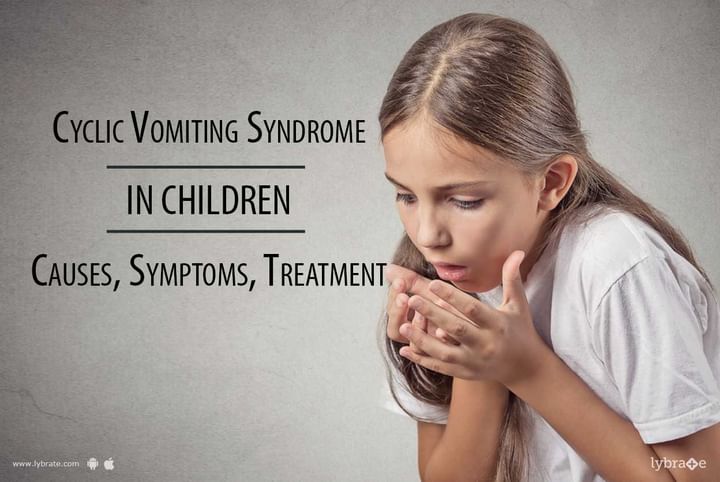Cyclic Vomiting Syndrome in Children - Causes, Symptoms, Treatment
Cyclic vomiting syndrome (CVS) is characterized by periodic bouts of nausea and vomiting that happens at cyclical intervals. It affects all ages, but is more common in children. The condition is quite stereotypical in that there are paroxysms or bouts of vomiting that is recurrent and follows days of normal health.
Causes: There is no definite reason identified, but it is said to have a strong hereditary correlation. Studies have shown mitochondrial heteroplasmic (abnormal growth of mitochondria, which is a cellular component) to be one of the factors that can lead to CVS. The genetic correlation, however, is very difficult to establish, specifically because vomiting and nausea are common symptoms that occur with most conditions in children. And CVS is most commonly noted with conditions like infections and emotional excitement. Infection could be either tooth decay or sinusitis or anything else. Lack of sleep, anxiety, holidays, allergies, overeating, certain foods, menstruation - a host of factors have been shown to induce CVS. There is also a strong association with migraine and conditions that lead to excessive production of stress hormones.
Symptoms: The syndrome (a group of symptoms) usually has 4 phases:
- Symptom-free interval phase: The child is completely normal in this phase, which happens in between bouts.
- Prodromal phase: Prodrome is an indication that a disease or a condition is about to happen. In CVS, this is usually nausea and abdominal pain that can last from a few minutes to a few hours. Treatment in this phase can curb the disease. However, there could be some children in whom this may not manifest and the child may directly start with vomiting.
- Vomiting phase: Repeated bouts of paroxysmal vomiting happen associated with nausea, exertion, fatigue, and drowsiness.
- Recovery phase: As the nausea and vomiting begin to subside, which may take a couple of days, the child returns back to normal slowly. However, the lethargy and energy levels will take a couple of days to return to normal.
Treatment: Treatment again depends on the severity and the phase at which it is being recognized. If a child has repetitive bouts, then the parent and the doctor would have identified a pattern to it.
- If the causative agent has been identified, for instance, infection or migraine, then managing that takes care of the CVS also.
- If identified during the prodromal phase, again it can be managed with suitable anti-emetic medications.
- If identified after full onset, rest and sleep and medications to control nausea and vomiting are required. Adequate hydration with electrolyte replenishment and sedatives can provide additional support.
However, in most cases of childhood CSV, the pattern will be identified and that helps in better management, both the child/parent and the podiatrist.



+1.svg)
